Nearly a century ago, a dog named Hachiko won over the hearts of the Japanese nation through his steadfast loyalty to his owner.
To this day, he is a beloved national icon whose story provides a touching example of just how strong the bond between dog and human can be.
Adopted by a university professor named Ueno Eisaburo, the pair used to walk to the train station together every morning and return home together every evening. After his master passed away unexpectedly, Hachiko spent the next decade waiting for his arrival.
This is the story of Hachiko, Japan’s most loyal dog.
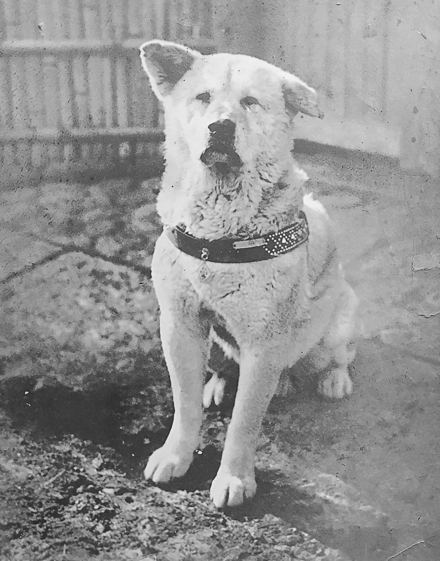
The Story of Hachiko the Dog
Hachiko was born on a farm in the Odate region of Japan in 1923, but his story begins a year later. That’s when Ueno Eisaburo, who had been looking for a purebred Akita dog like Hachiko, received him as a gift from one of his former students.
However, when Ueno introduced Hachiko into his home, it was a rocky start.
When Hachiko arrived, it was winter. He was frail and soon developed a fever. Ueno and his wife had to nurse the struggling pup back to health.
They allowed him to sleep under their bed, wrapped in fabric. Then, they placed ice bags on his forehead to cool him and used bags of hot water to keep his body warm.
This kind of treatment toward pets was unusual then and showed just how much professor Ueno loved Hachiko.
Over several months, Hachiko eventually grew stronger. But Ueno continued to dote on his furry friend. He brushed his thick fur daily and fed him rich meals of rice with broth, milk, and liver. And he took him on long walks with his other two dogs.
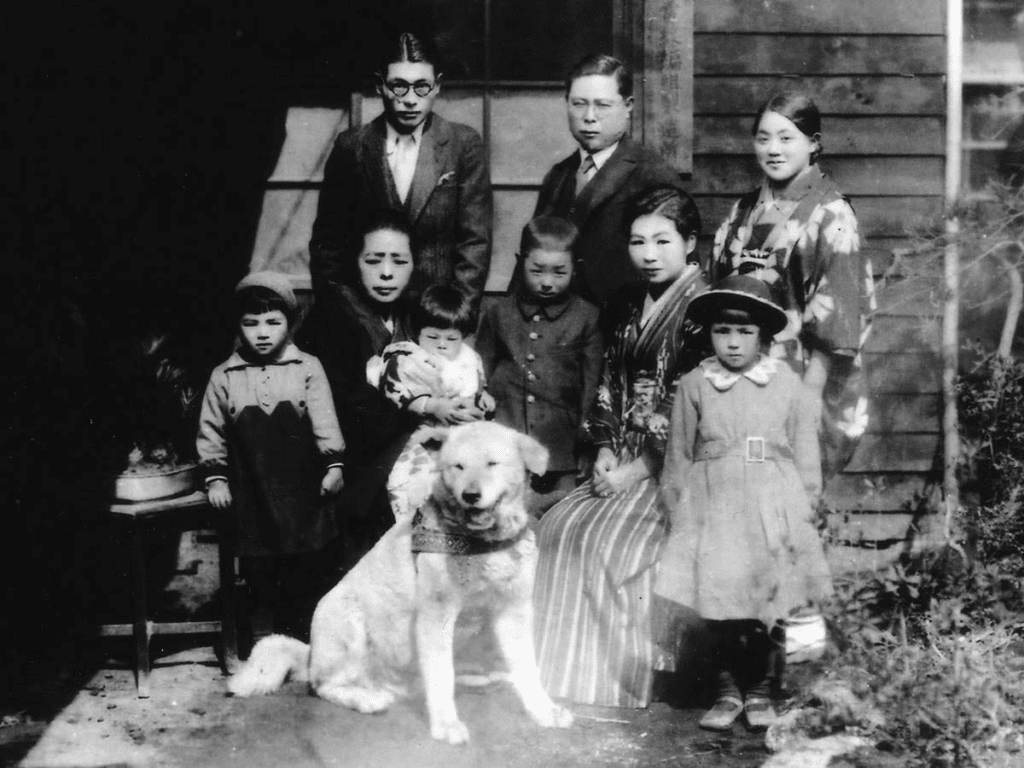
Hachiko soon got into the habit of accompanying his owner to Shibuya station every morning, where Ueno would catch a train to the university.
While Ueno was teaching, Hachiko would wait patiently for him on the platform. In the afternoon, Ueno would return, and the pair would walk home together.
This was their routine for years until one day in May 1925, Professor Ueno didn’t get off as he normally did.
Hachiko waited patiently, as always, watching each train come and go. But his friend never showed up. It turns out that professor Ueno had suffered a fatal brain hemorrhage that morning while teaching classes.
Hachiko waited as the trains came and went. Finally, it began to grow dark, but still, he remained. The next day, Hachiko returned as usual. He waited all afternoon, but the professor never showed up.
Ueno’s relatives eventually took him to their home far from the station to continue caring for him. But Hachiko soon found his way back to Ueno’s house and to the Shibuya train station.
It seemed that nothing would stop him from being there when his friend finally showed up.
But Professor Ueno never came back.
How Hachiko Became a National Celebrity
It didn’t take long for Hachiko to become a well-known fixture at the train station. Employees fed him occasionally and even kept him company as he waited.
Eventually, his story got out, and curious people came to the station to see this special dog.
One of those people was Hirokichi Saito, one of Ueno’s former students and an expert on Akita dogs. He decided to follow Hachiko one day and was led to the house of Ueno’s former gardener, Kuzaburo Kobayashi.
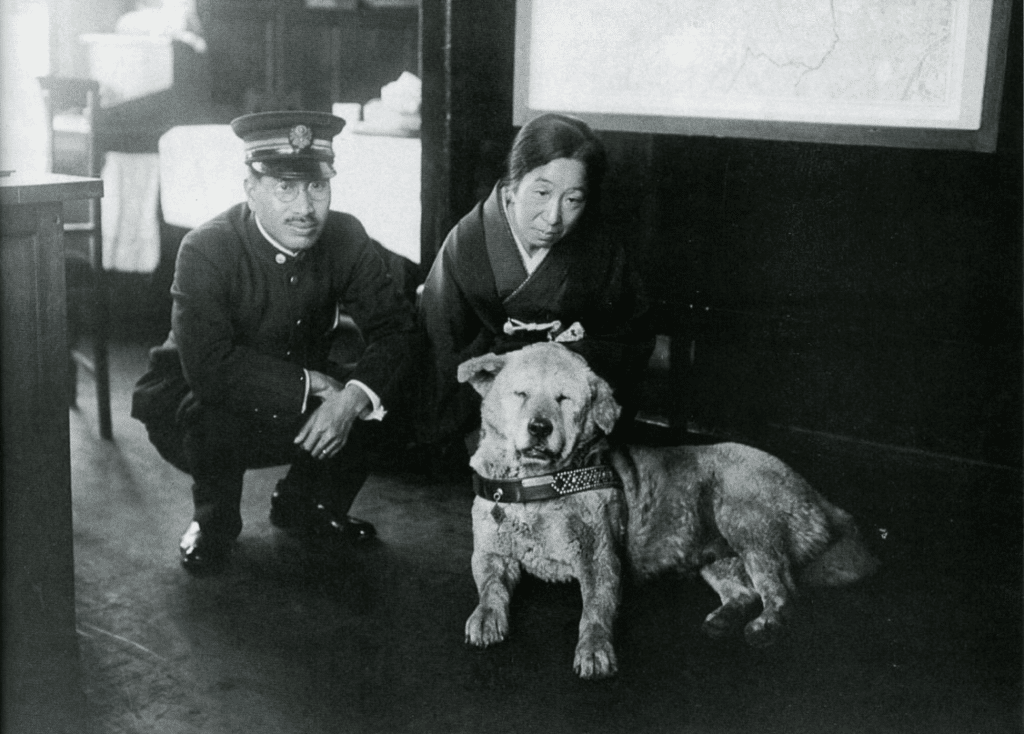
Saito wanted to know more about this special Akita dog, and the gardener provided details about his life with Ueno.
Saito then conducted a census of all of the Akita dogs in Japan and found that there were only 30 purebred Akitas. That in itself made Hachiko unique. But his loyalty really fascinated Satio, and he published article after article about him.
When one day in 1932, one of Saito’s articles appeared in the national newspaper, Hachiko became an overnight celebrity.
People from all over Japan came to see Hachiko while he waited for his deceased master. They regarded him not only as an example of loyalty, but also as a kind of good-luck charm.
Hachiko was no doubt happy to have company, but he didn’t let it distract him from his duty. He continued waiting for nine years and nine months, determined to be there to greet his master when he finally returned.
One day, some employees found Hachiko’s body slumped over on the side of the road outside the station. At eleven years old, the loyal dog passed away of natural causes.
But he had never stopped waiting.
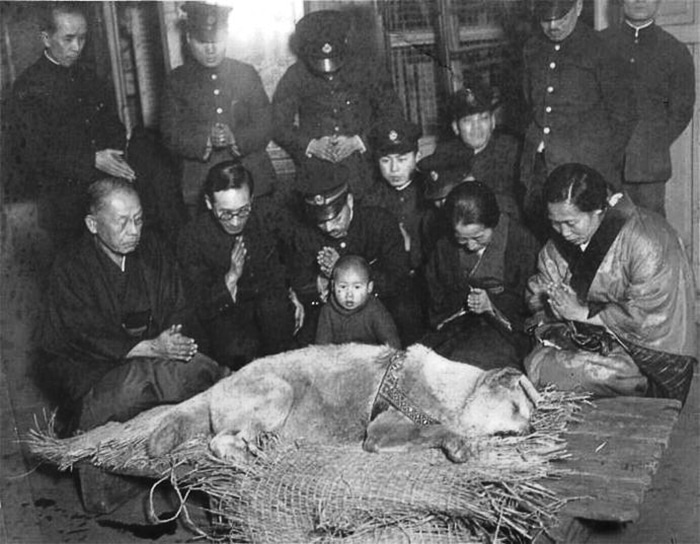
Hachiko’s Legacy
Ever since his passing, Hachiko’s story has served as an inspiration to many. Among some of the people who found Hachiko’s story to be inspiring have been several filmmakers.
Most recently, Richard Gere starred in an American version of his life called Hachi: A Dog’s Life. This 2009 remake was based on the Japanese film called Hachikō Monogatari, which had the top box office hit the year it was released, in 1987.
But Hachiko’s fame extends beyond film. After his passing, his body was taken to the National Science Museum of Japan to be preserved by one of the top taxidermists.
Anyone who wants to go see him can do so. There’s also a monument to Hachiko right outside his owner’s tomb in Aoyama cemetery in Tokyo.
Fittingly, a bronze statue was also erected in Hachhiko’s honor at the Shibuya train station. He was even present to witness the unveiling in 1934.
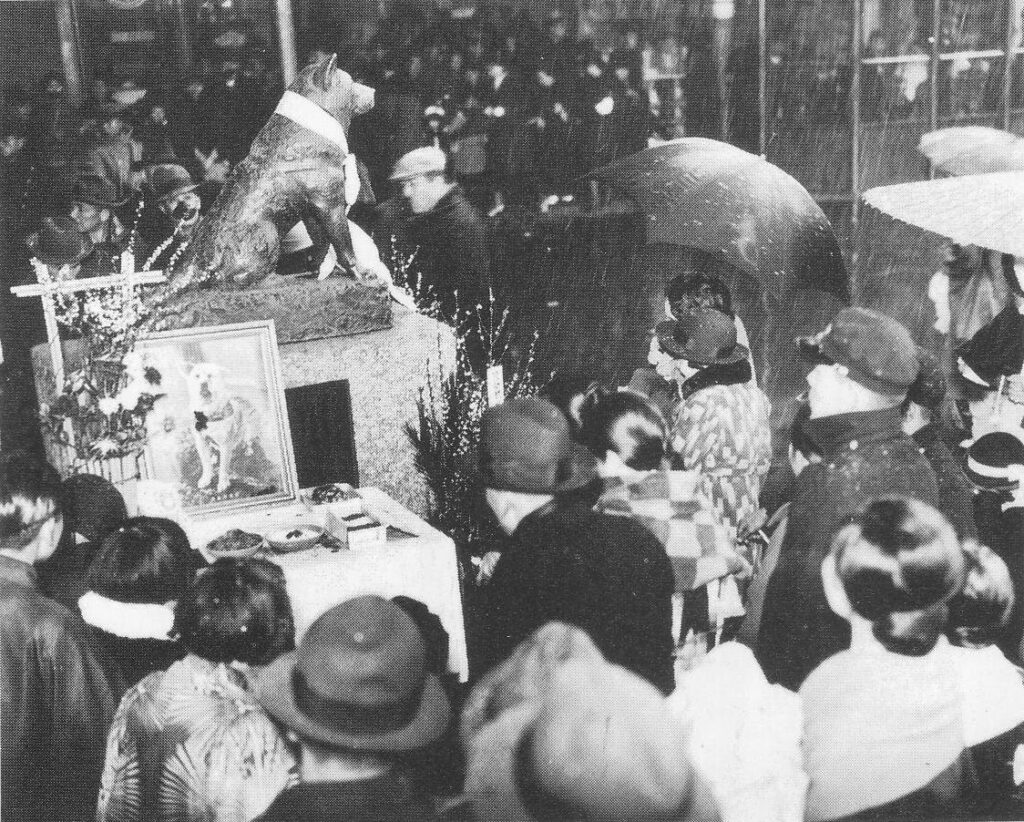
That statue was destroyed during World War II, but a new one was built in its place, which serves as a popular meeting point for locals.
Although the Shibuya statue is undoubtedly the most famous, several other statues of Hachiko are scattered throughout Japan.
One is located near Hachiko’s birthplace and another in Ueno’s hometown.
A statue of the pair greeting each other was erected on the University of Tokyo campus in 2015. Hachiko even has a statue in Rhode Island, where the film Hachi: A Dog’s Tale was filmed.
The funny thing is that Hachiko wasn’t trying to be noble or to leave a legacy. But perhaps that’s why he’s remembered so fondly today. He is an example of the kind of unconditional love that only a dog can provide.

